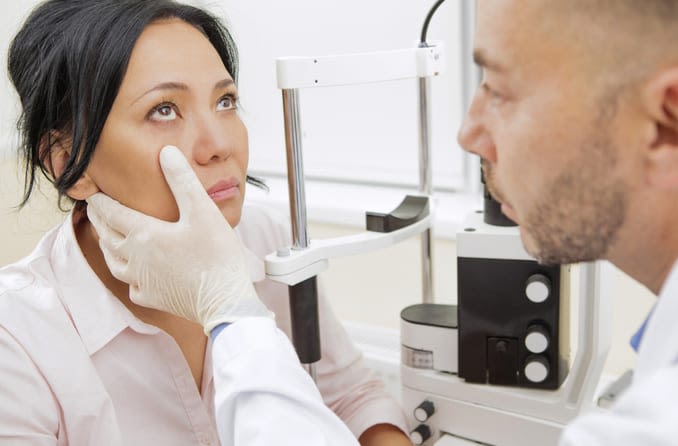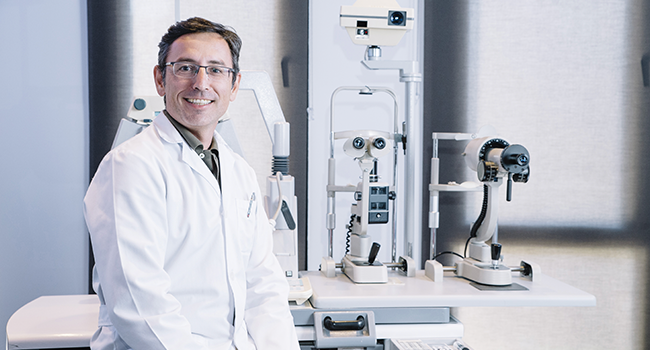Exploring the Latest Technological Advancements in Optometry and What They Mean for Eye Doctors
From the precision of Optical Comprehensibility Tomography to the nuanced insights supplied by AI-driven analysis tools, these developments are establishing new standards in client assessment and treatment. As these advancements penetrate the method, optometrists are encountered with the obstacle of accepting these tools to boost client results.
Developments in Diagnostic Tools
Progressing the area of optometry, developments in diagnostic tools have actually revolutionized the method eye treatment professionals evaluate and identify visual disabilities and ocular problems. The previous decade has actually experienced significant technological advancements, allowing even more comprehensive and accurate evaluations. Optical Coherence Tomography (OCT), for instance, supplies high-resolution cross-sectional images of the retina, permitting for the early discovery of diseases such as glaucoma and age-related macular degeneration. This non-invasive imaging method has come to be indispensable in modern optometric method.
Another trick development is the intro of advanced corneal topography systems, which map the surface area curvature of the cornea with accuracy. These devices are particularly advantageous for fitting get in touch with lenses and detecting corneal problems. Digital retinal imaging has actually changed conventional ophthalmoscopy, supplying in-depth, scenic views of the retina that facilitate detailed visual exams.
The advancement of wavefront aberrometry has also been essential, making it possible for the evaluation of refractive mistakes with unrivaled accuracy (Eye Doctor Optometrist). This modern technology aids in tailoring corrective lenses and enhancing surgical end results for refractive surgical procedures. Jointly, these analysis innovations encourage optometrists to supply remarkable client care, making certain early intervention and tailored therapy techniques, inevitably enhancing visual health end results
AI in Patient Administration
Structure on the structure of advanced diagnostic devices, the unification of fabricated intelligence (AI) in patient management stands for a transformative jump for optometry. AI systems are progressively used to enhance performance, precision, and customization in client care.
In addition, AI-driven systems promote structured person communications and management procedures. Automated organizing, digital assessments, and customized follow-up strategies not only boost individual complete satisfaction however additionally maximize time management for professionals. These systems can triage people based on the necessity of their problems, making certain that those in important demand get timely focus.
Furthermore, AI boosts decision-making by providing optometrists with evidence-based suggestions and treatment paths. By integrating information from digital wellness records, AI devices supply understandings that inform clinical decisions, minimizing the threat of mistakes and boosting person results. As AI remains to advance, its duty in client management will likely increase, improving the landscape of optometric care.
Breakthroughs in Retinal Imaging
In the world of optometry, retinal imaging has witnessed remarkable technological developments that are boosting analysis abilities and individual care. Developments such as Optical Comprehensibility Tomography (OCT) and fundus digital photography have actually reinvented how optometrists evaluate the retina and imagine.
Boosted imaging techniques like OCT angiography are additional refining diagnostic precision. This non-invasive strategy maps blood flow in the retina, using important understandings right into vascular health without the requirement for dye shots. Additionally, adaptive optics modern technology is being incorporated into retinal imaging systems to correct ocular aberrations, delivering extraordinary photo clarity. Such improvements facilitate the recognition of min retinal changes that could symbolize illness development.
Furthermore, developments in expert system are index enhancing retinal imaging by enabling computerized evaluation of large datasets. These systems aid optometrists in determining patterns indicative of pathology, thus improving analysis precision and performance. Collectively, these developments are transforming retinal imaging into a cornerstone of modern-day eye care, improving end results and increasing healing possibilities.
Teleoptometry's Expanding Duty
Teleoptometry is increasingly ending up being an important part of eye care, driven by improvements in digital interaction and diagnostic tools. This is especially beneficial in underserved and country areas where access to specialized eye treatment is often restricted.
The integration of synthetic intelligence (AI) more enhances teleoptometry, allowing the analysis of Visit Website visual information and assisting in the discovery of eye conditions such as glaucoma and diabetic person retinopathy. AI-powered formulas can rapidly analyze complicated imaging information, giving optometrists with beneficial insights that bolster scientific decision-making.
Moreover, teleoptometry supports connection of care through smooth integration with digital health and wellness records (EHRs), permitting optometrists to keep thorough person histories. This makes certain that individuals receive regular and individualized care also when consulting with different experts.
Despite these advantages, difficulties continue to be, including making certain information safety and security and taking care of patient expectations. Teleoptometry represents a substantial stride in the direction of even more accessible, effective, and patient-centered eye treatment. As technology develops, its function is positioned to expand even more.

Future Fads in Eye Treatment
A myriad of ingenious fads is readied to reshape the future of eye treatment, driven by technical innovations and the developing needs of clients. One significant trend is look at these guys the combination of synthetic knowledge (AI) in diagnostics, which guarantees to enhance the precision and performance of eye examinations. AI algorithms can analyze huge amounts of data from retinal photos, potentially discovering conditions like diabetic retinopathy and glaucoma earlier than typical methods.
Furthermore, individualized medicine is gaining traction in optometry, with genetic screening notifying personalized therapy strategies. This approach intends to maximize client results by customizing treatments to private hereditary profiles. Wearable modern technology, such as wise contact lenses, is likewise on the horizon, providing real-time monitoring of intraocular pressure or sugar degrees, thus providing constant insights right into ocular and systemic wellness.
The adoption of increased reality (AR) and digital fact (VR) in training and patient education is an additional emerging trend. These technologies use immersive experiences that can enhance understanding and abilities both for clients and eye doctors. As these trends develop, optometrists need to remain abreast of technological improvements to offer cutting-edge care, making sure enhanced patient outcomes and complete satisfaction in the dynamic landscape of eye care.
Final Thought

Collectively, these analysis innovations equip eye doctors to deliver remarkable individual treatment, making sure early intervention and customized therapy strategies, ultimately enhancing aesthetic health results.

As these modern technologies continue to advance, eye doctors should adjust and integrate them right into practice, ultimately optimizing workflow effectiveness and elevating the standard of eye treatment supplied to patients.